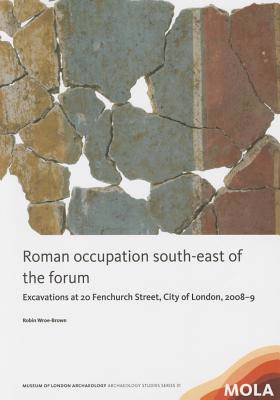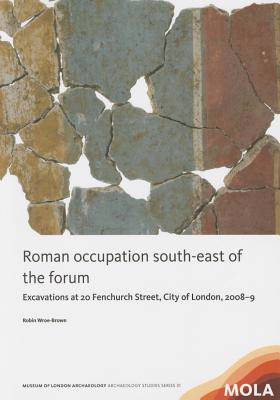
- Afhalen na 1 uur in een winkel met voorraad
- Gratis thuislevering in België vanaf € 30
- Ruim aanbod met 7 miljoen producten
- Afhalen na 1 uur in een winkel met voorraad
- Gratis thuislevering in België vanaf € 30
- Ruim aanbod met 7 miljoen producten
Zoeken
Roman Occupation South-East of the Forum
Excavations at 20 Fenchurch Street, City of London, 2008-9
Robin Wroe-Brown
Paperback | Engels
€ 25,45
+ 50 punten
Omschrijving
Excavations near the Roman forum on Londinium's eastern hill (modern Cornhill) have revealed archaeological evidence from the earliest period of London's history. There was intensive domestic occupation on the site from c. AD 50-5, which was interrupted by the Boudican fire of AD 60/61. The north-east corner of a temporary fort of c. AD 63-85 was found immediately to the east, at Plantation Place, and reconstruction of the plan of this fort indicates that 20 Fenchurch Streetsite would have lain within it. Scant evidence for this was recovered but finds include lorica segmentata armour fittings and a possible spear butt. Possibly fort-related features include clay-and-timber buildings, a large timber-lined water tank and a metalworking workshop. After the fort was demolished, the later 1st-century AD occupation of the site was again domestic in character, with a succession of short-lived clay-and-timber buildings constructed across the area.
During the 2nd century AD the pattern of activity changed, with longer lasting masonry buildings replacing the clay-and-timber constructions. The final Roman structure on the site was a 3rd-century masonry cellar.
The finds recovered have a heavily domestic bias, with household and personal items, including a large group of dress accessories. A comprehensive collection of pottery, with a wealth of early Roman material, includes mid 1st-century AD wares.
During the 2nd century AD the pattern of activity changed, with longer lasting masonry buildings replacing the clay-and-timber constructions. The final Roman structure on the site was a 3rd-century masonry cellar.
The finds recovered have a heavily domestic bias, with household and personal items, including a large group of dress accessories. A comprehensive collection of pottery, with a wealth of early Roman material, includes mid 1st-century AD wares.
Specificaties
Betrokkenen
- Auteur(s):
- Uitgeverij:
Inhoud
- Aantal bladzijden:
- 128
- Taal:
- Engels
Eigenschappen
- Productcode (EAN):
- 9781907586248
- Verschijningsdatum:
- 13/01/2015
- Uitvoering:
- Paperback
- Formaat:
- Trade paperback (VS)
- Afmetingen:
- 206 mm x 292 mm
- Gewicht:
- 498 g

Alleen bij Standaard Boekhandel
+ 50 punten op je klantenkaart van Standaard Boekhandel
Beoordelingen
We publiceren alleen reviews die voldoen aan de voorwaarden voor reviews. Bekijk onze voorwaarden voor reviews.











